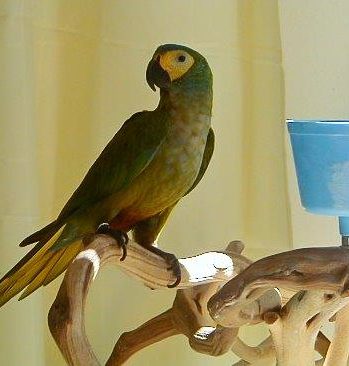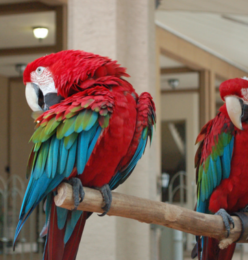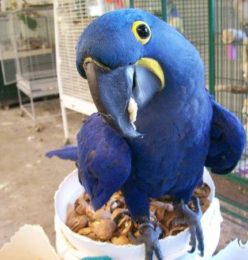Lexi – Red-Bellied Macaw
$1,500 $950
Meet Lexi! She is well started on socialization from birth to give her a solid foundation for great character. Lexi will be a very loyal companion to her new forever family and will come home to you up to date on vaccinations, and a head to tail vet check. Lexi is pre-spoiled and will be ready for all the love and attention she can get. Don’t miss out on making this affectionate girl your very own! Buy Macaw Parrot Online
RED-BELLIED MACAW PARROTS FOR SALE.
The red-bellied macaw (Orthopsittaca manilata, Boddaert 1783) is a species of the monotypic genus Orthopsittaca (Ridgway 1912), one of six genera of Central and South American macaws. Gender agreement of species name follows David and Gosselin (2002b). It was formerly classified as Ara manilata (BirdLife International 2004, Sibley and Monroe 1990 & 1993, Stotz et al. 1996). The protonym was Psittacus manilatus. The genus name Orthopsittaca is from Gr. orthos straight; psittake parrot; [“anterior lateral outline of cere straight or very faintly concave, without convexity in front of nostril” (Ridgway 1912)]; species name manilata / manilatus is from L. manus hand; latus broad, wide. Hence, “a parrot with wide hands [feet] and straight nose.
WE ARE TOP BREEDERS
A pet juvenile in Peru
The red-bellied macaw is medium-sized, about 300 g (11 oz) in weight and about 46 cm (18 in) in length including its long pointed tail. The plumage is mostly green; the cere and much of the face are covered with bare mustard-yellow skin, and the irises are dark brown. The forehead is bluish. The chin, throat and upper chest are greyish with some green scalloping, and the lower abdomen (“belly”) has a large maroon patch. The tail is long and tapered. The underwings and undertail are dull olive yellow. Adults have dark-grey beaks. The legs and feet are dark grey. In common with other parrots, they have zygodactyl feet, two toes pointing forward and two backward. Males and females have identical plumage, but males are usually larger and have larger heads. Juveniles are duller in colour than adults and have a grey beak with a conspicuous white mid-line stripe running along the length of the culmen (top of the upper beak).The Spix’s macaw is the only other macaw in which juveniles have a similar white culmen.
BUY RED-BELLIED MACAW PARROT
Red-bellied macaws make reedy, high-pitched screams. They roost communally in the moriche palms, and large numbers can be seen at the roost sites at dawn and dusk; (see crepuscular). They choose large stands of these palms that have an overabundance of woodpecker holes as roosting sites. They sleep communally in these groups of hollows. Depending on the size of the hollow, between five and 10 birds sleep together. As dusk approaches, they all pile into these dormitories and sleep shoulder to shoulder.
CONTACT US
Related products
Macaw Parrots
Macaw Parrots
Macaw Parrots
Macaw Parrots
Macaw Parrots
Macaw Parrots
Macaw Parrots
Macaw Parrots










